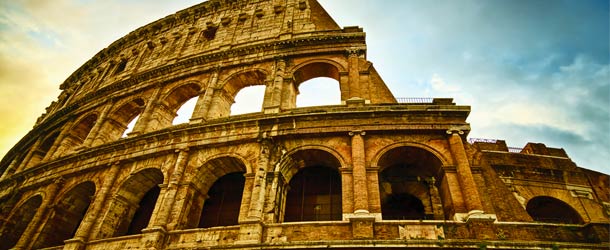One of the most iconic structures in the whole world, the Colosseum stands as one of the most recognisable and impressive sights of Imperial Rome. A World Heritage Site, it was the site of a number of events during the peak years of the Roman Empire.
In Latin, the structure was named the Amphitheatrum Flavium, which is anglicised as Flavian Amphitheatre. It is elliptical in shape, and built from a mix of concrete and stone. Even the fact that the structure was designed and built was incredible, a testament to the architectural nous and creativity of the time.
The Colosseum could hold somewhere between 50,000 and 80,000 spectators at a time, comparable to some of the larger sports stadia of the modern era. Construction began on the structure in 70 AD, was finished in 80 AD and then modifications were made between 81 and 96 AD.
It’s since been damaged by stone-robbers and earthquakes but the ruins remain in good health, making it one of the most popular tourist attractions in the city. Every year between four and five million people pay a visit to the attraction.
There were a number of different events held at the structure, with the most famous being the gladiatorial contests that have been made famous in modern media. The reality of these events is that gladiators – usually slaves but sometimes men who volunteered – would be paired for battles where the victor would normally be rewarded with a palm leaf while the defeated man would either be killed or spared, depending on crowd reaction.
Some of the other events include mock sea battles, when part of the Colosseum would be flooded, along with animal hunts, where exotic animals would be shipped in and hunted amongst complex scenery design to make things more interesting. Sometimes simple mythological tales would be acted out, and in the case where the hero was required to die, a condemned man would be forced to play the part.
If you’ve never been before then a visit to Rome must always include a trip to the Colosseum, such is its importance. It makes for a thrilling cruise excursion.
By Ian Lewis
Google




Comments: no replies